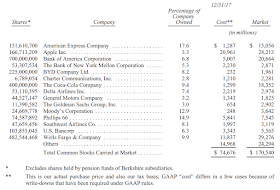なお、下記リンク先は購読者のみのアクセス制限付きです。無料で読みたい方は、たとえばTwitterの投稿でご紹介したGoogle検索経由などの方法でアクセスしてください。
Why Edward Thorp Owns Only Berkshire Hathaway (Barron's)
<質問> あなたの新刊『どんな市場でも闘える男』[未訳; 原題はA Man for All Markets]から、どのような教訓を得てほしいとお考えですか。
<ソープ> 己のためにできる最高のこととは、「みずからを教育して、明確かつ合理的にものごとを考えられるようにすること」です。数学や科学、論理的思考を身につけるのに役立つでしょう。その次に大切なのは、広い分野にわたって、書物を読んだり興味をいだくことです。もしそうできれば、道具として使えるものを増やすことができます。(バークシャー・ハサウェイの副会長である)チャーリー・マンガーは多種多様なメンタル・モデルの持ち主ですが、それらはものごとを考える上での短縮法といえるものです。私自身も手持ちがありますが、お気に入りのひとつに「外部性を理解せよ」というものがあります(他者の経済活動から生じる波及効果)。
たとえば、私が自宅に火災保険をかけたとしましょう。すると、となりに住むご家族は若干安全になります。これが「正の外部性」です。一方、環境性能の低いガソリン車に乗って大気を汚染させるにもかかわらず、なんの対価も支払わない人がいるとすれば、それが「負の外部性」です。もうひとつの例として「銃」があげられます。客が銃を買っていったことで、販売業者は大儲けをします。しかしその客が他人を殺せば、社会が大きな費用を支払うことになります。一方で、銃の販売業者は何も支払いません。
さまざまな問題を分析しようとする際に、「外部性」を考えるのは有効なやりかたです。もし「負の外部性」をもたらす人に対して、その責任をとらせるようにすれば、多くの問題が解消されます。単刀直入な解決例をあげてみましょう。自動車は年間3万5千人の命を奪っています。もし自動車を運転したければ、免許証が必要ですし、訓練もそうですし、損害を与えたときのために保険も必要です。それと同じように、銃の場合も保有者に責任を持たせるべきです。たとえば、紛失した際にはその旨を報告しなければなりません。銃の場合でも同じようにすれば、何千もの銃器を保有することはできなくなるでしょう。それを引き受ける保険会社など考えられないですから。AR-15[半自動ライフル銃]に必要な保険料はいくらになると思いますか。おそらくは相当な金額になるでしょう。
Q: What lessons do you want people to come away with from A Man for All Markets?
A: That the best thing you can do for yourself is to educate yourself to think clearly and rationally. It helps to have math or science or logical training. The next is to be widely read and curious. If you are that way, you have so much more to use in terms of tools. [Berkshire Hathaway Vice Chairman] Charlie Munger has a collection of multiple mental models—shorthand ways to think of things. I also have my own, and one of my favorites is to understand externalities [spillover effects from other economic activity].
For example, if I buy fire insurance for my house, my neighbor is a little safer. That’s an externality benefit. If someone drives a polluting gasoline car and uses the atmosphere as a waste dump without paying any consequences, that’s a negative externality. Another one is guns. Gun dealers make a lot of money, their clients go out and kill people, and society pays huge costs. Gun dealers don’t.
Externalities are a good way to start analyzing problems. A lot of problems go away if you make people who distribute negative externalities pay the consequences. There’s a neat solution. Automobiles kill about 35,000 people a year. If you want to drive a car, you need a license, some training, and also insurance if your car does damage. People have to be accountable for their guns, just like cars. If your car is stolen, you are expected to report it. [What if it were the] same with guns? People wouldn’t be able to accumulate thousands of guns, because what insurance company will insure it? What do you think the insurance would be for an AR-15? It would be very high.

